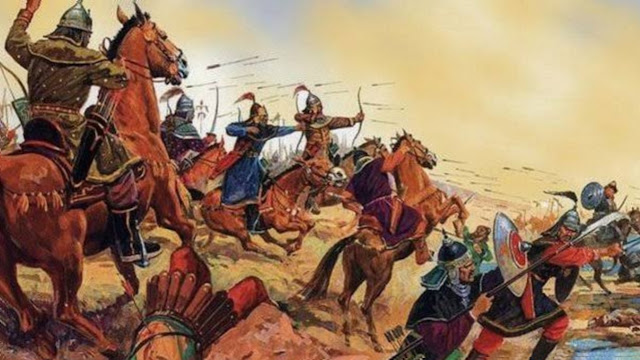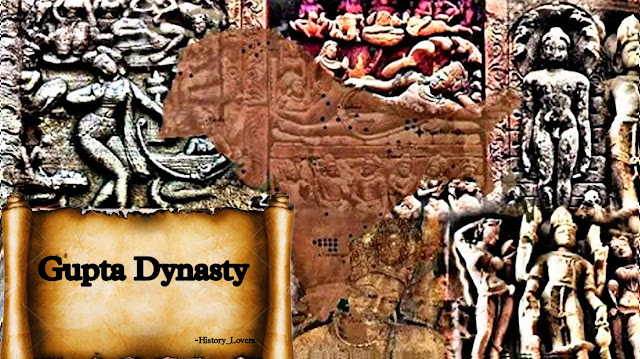The Unforgettable Warrior [ Maha Rana pratap ]
Maharana Pratap: The Undying Flame of Mewar
 |
| Maharana Pratap |
Maharana Pratap, more than just a historical figure, embodies the spirit of resistance, unwavering courage, and unwavering loyalty to his land. Renowned as the king who refused to bow to the mighty Mughal emperor Akbar, his legacy transcends borders and time, inspiring generations with his unwavering principles and indomitable spirit. In this article, we explore the life and times of this legendary warrior, exploring his battles, strategies, leadership, and the enduring impact he has left on India's historical narrative.
The Early Years: Forged in Steel
Maha Rana pratap Born in 1540 as Pratap Singh I, the eldest son of Maharana Udai Singh II of Mewar, his upbringing was steeped in valor, chivalry, and unwavering devotion to his kingdom. Trained in martial arts, horsemanship, and warfare strategies, he emerged as a fierce warrior, renowned for his strength and tactical acumen. The fall of Chittorgarh to Akbar in 1568 marked a turning point in his life. Forced to live in exile with his family, the young prince witnessed the humiliation and suffering inflicted upon his people. It was within these shadows that the flames of resistance ignited within him. According to some texts Maharana Pratap Height is almost 7.5 ft. And his weight is above 300kg including his sword, Armour, Helmet and all the equipment he wears.
Refusing Submission: The Roar of defiance
Akbar, keen on unifying the Rajput kingdoms under his reign, offered Pratap a chance to submit and retain his title. However, true to his Rajput principles, Pratap refused, declaring, "I'll sacrifice my head but won't bow my head." This courageous act resonated across the Rajputana, forging him into a symbol of defiance against Mughal imperialism.
The Battle of Haldighati: A Legacy Forged in Blood
In 1576, the iconic Battle of Haldighati unfolded. With a smaller but strategically positioned army, Pratap, riding his majestic grey steed Chetak, launched a daring attack on the vast Mughal forces led by Man Singh I. Though ultimately a tactical defeat, the battle showcased Pratap's valor and guerilla warfare tactics, leaving an indelible mark on Mughal ambitions.
Years of Guerilla Warfare: Unwavering Resistance
Following Haldighati, Pratap adopted guerilla warfare, operating from the Aravalli hills. He launched numerous raids and ambushes, inflicting significant losses on the Mughals and keeping the flames of resistance alive. Despite facing hardships and betrayals, he never wavered in his commitment to reclaim his kingdom.
Chetak: The Loyal Steed who Galloped into Legend
 |
| Chetak |
Chetak, the magnificent grey steed of Maharana Pratap, isn't just a footnote in history; he's a symbol of unwavering loyalty, courage, and a bond forged in battle. More than just a horse, Chetak stands as a testament to the unique relationship between warrior and animal, where trust and understanding transcended words. Maharana Pratap weight is above 300kg including his sword, Armour, Helmet and all the equipment he wears. And chetak bared all his weight and fought during wars.
Loyal Companion, Fearless Warrior:
Born and bred in the Kathiawar region, Chetak's exceptional speed and intelligence caught the eye of the young Pratap. From a young colt, he trained alongside the prince, developing an almost telepathic connection. As Pratap honed his skills, Chetak became more than a mount; he was his confidante, his shadow, his partner in the fight for Mewar's freedom.
Hero of Haldighati:
The Battle of Haldighati stands as a testament to Chetak's legendary bravery. Amidst the chaos and the clash of steel, Chetak became an extension of Pratap himself. He charged through enemy ranks, defying arrows and spears, protecting his master with unwavering dedication. When faced with insurmountable odds, Chetak, understanding the danger, carried Pratap to safety, leaping across a treacherous chasm with a final burst of strength.
More Than a Myth:
The story of Chetak's final moments lives on in folklore and ballads. Mortally wounded during the escape, he is said to have bowed his head before collapsing, a final act of loyalty to his king. Although some historians debate the historical accuracy of this account, the symbolic power remains undeniable.
A Bond Forged in Battle:
The tale of Chetak and Pratap transcends a simple animal-master relationship. It represents the unique understanding and trust that can exist between warriors and their steeds. Their bond, forged in battle, serves as a powerful reminder of the courage and loyalty that can exist between humans and animals.
Enduring Legacy:
Chetak's memory lives on not just in stories and songs, but also in the majestic Chetak Memorial in Rajasthan. His story continues to inspire artists, writers, and filmmakers, reminding us of the vital role animals can play in human endeavors. More importantly, he serves as a timeless symbol of devotion, courage, and the unwavering will to fight for what one believes in.
Beyond the Battlefield: A Statesman's Vision
Pratap's leadership extended beyond the battlefield. He forged alliances with other Rajput rulers, fostering unity among them. He also prioritized the well-being of his people, ensuring their survival and fostering a sense of hope amidst the struggle.
 |
| Guerilla war fare |
Legacy: A Symbol of Freedom
Although Pratap never formally regained his entire kingdom, his legacy transcends territorial boundaries. He became a symbol of Rajput pride, unwavering resistance, and the fight for freedom. His story continues to inspire generations, reminding us of the power of courage, conviction, and the fight for what we believe in.
Several aspects of Maharana Pratap's life and legacy invite further exploration:
Maharana Pratap: Beyond the Historical Account
Advisors and Allies:
Bhamashah: This shrewd advisor and financial wizard played a crucial role in supporting Pratap's guerilla warfare, often pawning his own properties to fund the resistance. Examining their collaboration offers insights into the strategic and economic facets of the struggle.
Hakim Khan Sur:
This Afghan noble, who defected from the Mughals, became Pratap's trusted commander and close confidante. Exploring their bond highlights the diverse alliances forged during the conflict.
Rathore Clan:
Understanding the complex relationship between Pratap and other Rajput rulers, particularly the powerful Rathore clan, illuminates the intricate political landscape of the era and the challenges of forging unity.
Perspectives of Women:
Maharani Ajabde:
Pratap's wife, often depicted as a courageous figure who pawned her jewelry to support the war effort, deserves deeper exploration. Examining her life, sacrifices, and influence provides a broader understanding of women's roles during this period.
Portrayal in Popular Culture:
Echoes of Valor: Folklore and Ballads of Maharana Pratap
Maharana Pratap, the legendary Rajput warrior king, transcends the pages of history and lives on in the vibrant tapestry of Rajasthani folklore and ballads. These oral traditions, passed down through generations, serve not just as repositories of historical events, but as powerful testaments to his unwavering spirit, courage, and resistance against the mighty Mughal empire.
Epic Narratives:
Ballads like "Khetram Ramayan" and "Veer Sanga" paint a vivid picture of Pratap's life and battles. They recount his heroic charge at Haldighati, his unwavering loyalty to his land, and his unwavering dedication to his people. These narratives, often sung by wandering bards known as Bhopas, evoke emotions of admiration and inspire listeners to uphold valor and righteousness.
Beyond Battles:
Folklore offers a more intimate glimpse into Pratap's life and character. Stories like "Bappa Rawal and Maharana Pratap" highlight his unwavering principles and refusal to bow down, even in the face of adversity. Legends like "Chetak's Sacrifice" speak volumes of his bond with his loyal steed, symbolizing the deep connection between warriors and their animals.
The Power of Symbolism:
Animals like Chetak, the grey steed who carried Pratap across battlefields, and Panna, the majestic elephant gifted by Rani Durgavati, are imbued with symbolic significance. They represent unwavering loyalty, strength, and courage, further bolstering Pratap's image as a legendary hero.
Impact on Cultural Identity:
These stories and songs are not merely entertainment; they are deeply woven into the cultural fabric of Rajasthan. They instill a sense of pride, honor, and resistance in generations of Rajputs. Even today, children grow up listening to these tales, their hearts swelling with admiration for the legendary king who refused to bend.
Enduring Legacy:
The folklore and ballads of Maharana Pratap are more than just historical accounts; they are living testaments to the power of human valor, the importance of upholding principles, and the enduring spirit of resistance. As long as these stories are told and sung, the legacy of Maharana Pratap will continue to inspire generations to come, reminding us that even in the face of overwhelming odds, courage and conviction can never be extinguished.
Beyond the Battlefield: Exploring Rana Pratap in Literature and Cinema
 |
| Dramas and Culture |
Maharana Pratap's legendary stand against the Mughal empire transcends historical records. His story lives on, not just in folklore and ballads, but also in the realms of literature and cinema, where his life and ideals have been reimagined and reinterpreted for diverse audiences.
Literary Portrayals: From Epics to Novels
Literary works delve into the complexities of Pratap's persona and motivations. Kavi Shivlal's poem "Veer Vinod" presents him as a valiant warrior, while Kaviraj Bankidas' epic "Veer Ratna" emphasizes his spiritual strength and devotion to dharma. Novels like Krishna Chandra Singh's "Maharana Pratap" and Abhay K.'s "Rana Pratap" offer fictionalized accounts, exploring his relationships, inner conflicts, and strategic brilliance.
Cinema: Visualizing Valor and Sacrifice
The silver screen has provided a powerful platform for showcasing Pratap's story. Mughal-e-Azam (1960), though focusing on Akbar, portrays Pratap with dignity and respect. Mehboob Khan's Samrat Prithviraj Chauhan (1962) depicts a dramatic encounter between Pratap and Prithviraj, highlighting their shared spirit of resistance. The 1997 television series "Maharana Pratap" offered a comprehensive portrayal of his life and struggles, gaining immense popularity across India.
Interpretations and Perspectives:
These portrayals vary in their approaches. Some, like "Veer Vinod," lean towards heroic glorification, emphasizing his physical prowess and battlefield victories. Others, like "Maharana Pratap" (novel), delve into his emotional struggles and leadership challenges, offering a more nuanced perspective. Additionally, filmmakers often navigate sensitive historical and political contexts, influencing their portrayals.
Impact and Relevance:
Literature and cinema have played a crucial role in popularizing Pratap's story, making him a household name across India. These portrayals evoke feelings of patriotism, valor, and sacrifice, inspiring audiences to stand up for their beliefs. However, it's important to critically engage with these interpretations, recognizing their artistic liberties and potential biases.
 |
| Legacy of Maharana Pratap |
Conclusion: A Flame that Continues to Burn
By delving into these facets, we gain a more nuanced understanding of Maharana Pratap, not just as a historical figure, but as a complex individual, a skilled leader, and a symbol of resilience that continues to inspire across generations and cultures. This enriched narrative allows us to engage with his legacy on a deeper level, drawing valuable lessons from his life and struggles.
Maharana Pratap's story is not just a historical account; it is a timeless inspiration. His personality and achievements were unforgettable. His legacy transcends borders and cultures, reminding us of the unwavering human spirit in the face of adversity. As we remember him, let his courage, leadership, and principles continue to guide us and illuminate the path towards a more just and equitable world.

